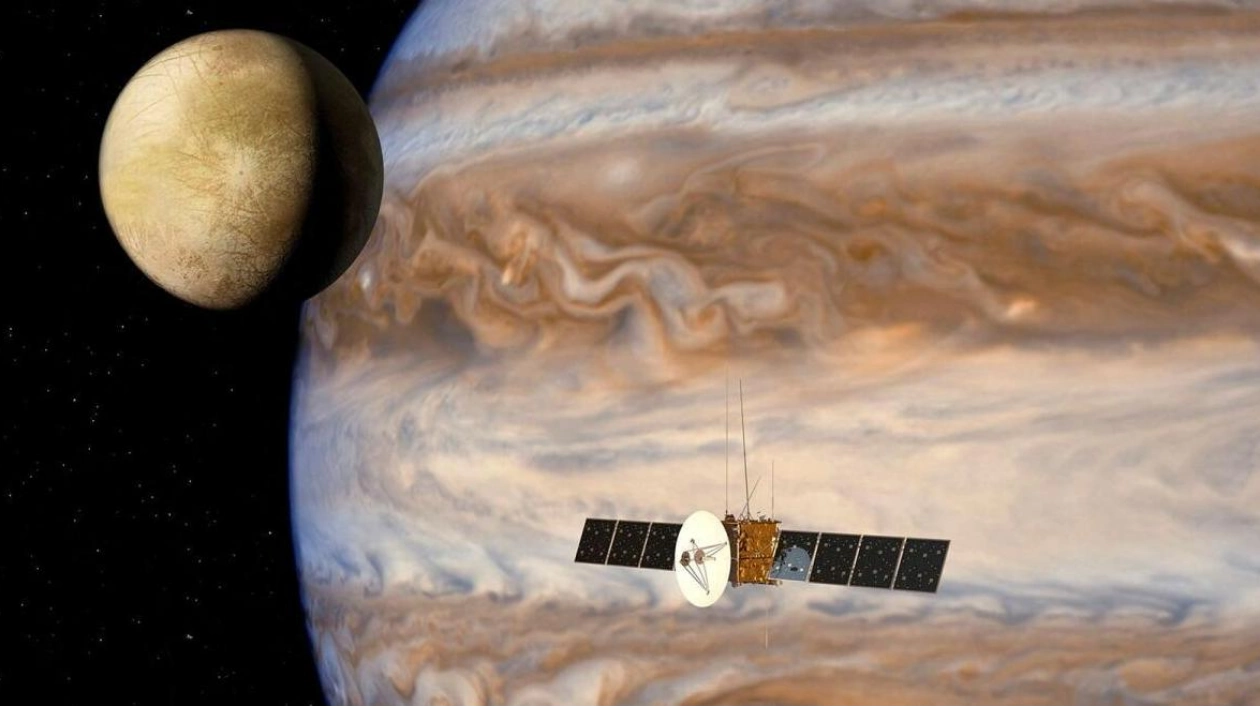European scientists are set to make history in orbital maneuvers on Monday, utilizing the gravitational forces of both the Moon and Earth in rapid succession to direct the Juice probe towards Jupiter in a groundbreaking double slingshot maneuver. Over a year since its launch, the European Space Agency's Jupiter Icy Moons Explorer (Juice) is slated to re-approach Earth on August 19-20, leveraging the decelerative pull of our planet's gravity to expedite its journey to Venus and ultimately to Jupiter. In an innovative dual maneuver, the Juice probe will initially harness the Moon's gravity to align itself perfectly towards Earth. This approach carries risk, as even the smallest deviation at this stage could be magnified during the subsequent phase, which involves utilizing Earth's gravity to decelerate. Scientists caution that such an error could jeopardize the eight-year mission to reach Jupiter and its moons.
"This maneuver is somewhat complex because any error would require correction, necessitating propellant," explained Nicolas Altobelli, the Juice Mission manager, in an interview. The ESA reported that the Airbus-built probe is expected to come within 750km of the Moon's surface at its closest approach. The technique of 'gravity assist' has been employed by scientists for decades to navigate the solar system efficiently, involving a close pass by a celestial body to accelerate, decelerate, or alter course using its gravitational pull. However, this week's lunar-Earth fly-by marks the first attempt to execute two such maneuvers consecutively. If successful, this will set Juice on a path to reach Jupiter and its three major ocean-bearing moons — Callisto, Europa, and Ganymede — by 2031, aided by three additional single gravity assists: Venus in 2025, and Earth again in 2026 and 2029.
ESA scientists considered various strategies to propel Juice to Jupiter without resorting to an impractically large rocket that would be required without any gravity assists. By using the Moon's gravity to alter its course, the probe can intercept Earth in front of its orbital path around the Sun, which slows down the probe, whereas passing behind would accelerate it, according to Altobelli. This strategic slowdown enables ESA's planners to aim for Venus and capitalize on its notably strong slingshot effect. "It's an advantageous alignment of the Moon's position around Earth... We are taking advantage of the situation," Altobelli told Reuters. Building on NASA's 1990s Galileo mission to Jupiter, the ESA-led Juice mission will orbit Jupiter, conduct fly-bys of its three significant icy moons, and eventually orbit Ganymede to investigate its potential to support life.
"This involves studying the conditions and determining whether these moons could harbor a potential habitat with conditions suitable for life as we understand it," Altobelli stated.






